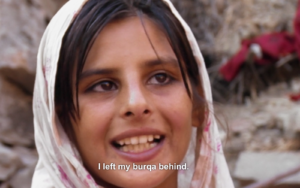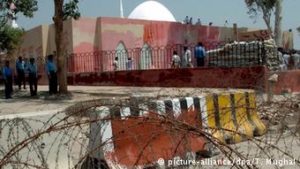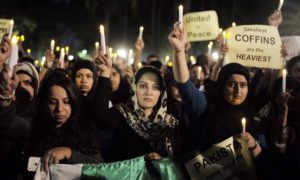Mar 29 2018
Among the Believers
The documentary, Among the Believers, provides an in depth and exclusive view of Abdul Aziz and his work to impose sharia law throughout Pakistan. The film follows Abdul Aziz on his path to promote extreme Islam views, as well as two children who have experienced the Red Mosque first hand. The Red Mosque is a school for students in which Islam extremists require their students to memorize the quran and fight for their extreme views in exchange for free housing, meals, and their “access into heaven.” Here, students spend the entirety of their days memorizing the verses of the quran, although they are not taught the actual meaning behind the words.
The first Red Mosque was built in 1965 and ran by Maulana Abdullah until his assassination in 1998. Soon thereafter, his son, Abdul Aziz, was left in charge of the mosque, turning it into a place of open opposition to the government and extreme islamic teachings. Although many people of the mosque claim it to be peaceful, Abdul Aziz and his followers are heavily tied to ISIS and the Taliban in Pakistan. The current state of Pakistan is filled with political unrest and civil war, due to islamic extremist such as Abdul Aziz and his followers, fighting for sharia law to be implemented as law throughout the country. In response, the Pakistani government retaliated by killing many relatives of Abdul and invading mosque’s that were built around the country for his teachings. However, as Aziz’s power began to decline, his followers and the student’s of the mosques began to retaliate and fight against the government’s attempts to shut down their schools. As consequence, ties between his students and other radical groups such as ISIS and the Taliban were strengthened.
Throughout the documentary, we are given an exclusive look inside these schools and their day to day routine. For many students, such as Talha, age 12, the day begins around 8 am to begin memorizing the quran. As camera’s scan the multiple classrooms filled with young boys reciting islamic verses, many of them rocking back and forth as they do so, accounting for the stress and anxiety they must feel under the pressure of strict teachings. When Talha was questioned by the filmmakers as to what his verse meant, he was unable to give an answer, since the students are not taught the meanings of the memorized verses. However, students like Talha remain loyal to the mosque for it has provided them with a free education, housing, meals, and “entrance into heaven with a special crown.” For citizens and young children living in poverty, the opportunity to attend these schools is more appealing since they have little to no other means of acquiring these commodities. However, for some students such as Zarina, also 12, the strict schedule and teachings of the Red Mosque are too intense, accounting for her willingness to escape the treachery of the school. Zarina shared with the filmmakers that when she felt it had been too much, she ditched her Burka and fled the campus by jumping one of the surrounding walls. From here, Zarina reconnected with her family and began to attend a normal school in which she was happy to attend and learn, while remaining an advocate against the Red Mosque and it’s teachings.
In December of 2014, 132 school children were massacred by the Taliban in Peshawar, resulting in outrage from Pakistan’s moderate majority. Vigils were held all over Pakistan and around the world, resulting in the mourning citizens of Pakistan to come together to fight against the Taliban and the heinous acts performed by islam extremist groups, led by Pervez Hoodbhoy. Throughout the film, Hoodbhoy is also seen consistently condemning Aziz’s actions and sermons, making him an appropriate and necessary leader in the fight against terrorism in Pakistan.
While examining the situation in Pakistan, it’s important to look back at the root causes of unrest within the country. Most of the agitation seen between groups in Pakistan stems from Britain’s previous colonial rule over the country, and later the Partition of India in 1947 that split India into two countries with differing religious views. Although the split of the countries was made with intentions of encouraging peace within the area, many citizens were not in favor of the split nor aware of the effects it would bring among the area. Mass migrations continued across borders as some people of conflicting religions fled to the country of their religious majority, while others did not. This resulted in conflicting views within the same areas as well as dislocation of families and cultures. It is important to remember that in many cases, what developed countries see as a fair solution, can have heavy detrimental effects within a developing one. As a result, Pakistan is now left to rebuild their government and society in a way that is rational and prosperous for their specific citizens and cultural wants.




